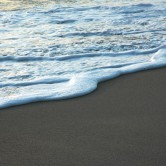
Many people’s knowledge of the sea doesn’t extend much further than knowing that they should check the tide times before going for a walk on a beach that often gets cut off at high water. Yet there are some fascinating facts about tides that you don’t need to be an avid sea-goer to enjoy. Here are just a few:
Fact One
It is wrong to talk about tides coming in or out. It is more correct to think about the water going up and down and this movement is caused by the sun and moon’s gravitational pull, with the moon being the far stronger force.
Fact Two
Tide times are actually dictated by long-period waves reaching the coastline. High tide is really the crest of this wave while the trough marks low tide.
Fact Three
There are some places on the planet that only have one high and one low tide rather than the usual two. This is caused by the coastline’s shape and that of the ocean floor.
Fact Four
The tidal troughs happen at around 12-hourly intervals but because the moon is constantly rotating around earth it means that it is not in exactly the same spot at an identical time each day. This is why the times of high and low tides in particular areas change by around 50 minutes each day.
Fact Five
You will get spring tides when the moon is at the full moon or new moon phase, while neap tides happen in the last quarter and first quarter phase.
Fact Six
The lowest tidal range – the difference between low and high tide – occurs in open ocean, where it is usually around two feet. In Canada’s Bay of Fundy, however, you will find the biggest tidal range; a change of up to 40 feet between the lowest point of the tide and the highest.
